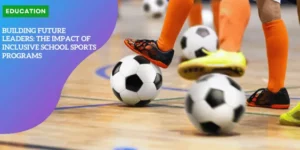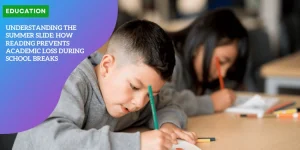Transform Your Teaching: 4 Game-Changing Techniques to Boost Student Engagement
1. Collaborate and Learn from Fellow Educators
Importance of Sharing Successful Teaching Practices
Teaching is a profession built on shared knowledge.
When educators come together to share successful practices, everyone gains.
By exchanging what works, we not only enhance our own skills but also contribute to a collective improvement in educational standards.
Sharing these insights can be simple yet profoundly impactful, opening doors to innovative approaches we might not have explored alone.
Observing Colleagues’ Methods for Improvement
One powerful way to enhance your teaching is by observing your colleagues.
Watching different teaching methods firsthand can be incredibly enlightening.
It offers a chance to see how others tackle common challenges or engage students in creative ways.
Observations can serve as a mirror, reflecting techniques that might be adopted and adapted to fit your unique classroom environment.
Leveraging Diverse Experiences, Including Newcomers’ Fresh Strategies
Diversity within teaching teams brings a wealth of experiences and perspectives.
Newcomers often arrive with fresh strategies and modern approaches.
Their recent training can illuminate contemporary methods and technologies that more seasoned educators might find beneficial.
Embracing this diversity enriches the learning environment, allowing schools to evolve dynamically.
Cultivating a culture of collaboration not only breeds innovation but fosters a supportive community among educators.
This continuous learning and adaptation benefit both teachers and students, creating a vibrant educational ecosystem.
As we explore the ways to engage students and develop meaningful relationships, it’s evident that collaboration is at the heart of transformative teaching.
2. Build Authentic Connections with Students
Humanizing the Teacher-Student Relationship
Opening up about your life can transform the way students perceive you.
Share snippets about your hobbies, favorite movies, or even the pets you have.
This small act helps students see you as more than just an authority figure.
When students relate to you on a personal level, they feel more comfortable in the classroom, which can increase their willingness to engage in learning.
Understanding Students Beyond the Classroom
Take a few minutes each day to chat with your students about their hobbies or what they do outside school.
This knowledge builds rapport and shows them you care about more than just their academic performance.
It creates a sense of belonging and trust, essential for fostering a positive learning environment.
The Impact on Engagement and Achievement
Research shows that strong teacher-student relationships lead to higher engagement and better academic outcomes.
A study conducted by UNSW found a direct correlation between positive interactions and increased engagement at school.
When students feel understood and appreciated, their anxiety decreases, and their academic focus sharpens, resulting in a more fulfilling classroom experience.
Nurturing these relationships sets the stage for dynamic learning.
By connecting on a personal level, you’re not just teaching subjects; you’re inspiring enthusiastic learners.
Next, let’s explore how granting students decision-making power can further elevate their educational journey.
3. Empower Students through Shared Decision-Making
Creating a classroom environment where students feel empowered enhances their engagement and commitment to learning.
By incorporating strategies like flexible seating, collaborative rule-making, and discovery-based learning, teachers can foster a sense of ownership among students.
Flexible Seating Arrangements
Gone are the days of rigid seating charts. Allowing students to choose where and how they sit can boost their comfort and concentration.
Flexible seating options like bean bags, standing desks, or cushions offer students the autonomy to decide which setup best suits their learning style.
This variety helps students take charge of their learning environment, promoting responsibility and engagement.
Collaborative Rule-Making
Inviting students to participate in crafting classroom rules transforms them from passive recipients to active contributors.
When students help establish guidelines, they are more likely to respect and adhere to them.
This collaborative process not only builds a communal atmosphere but also teaches essential skills like negotiation and compromise.
It reinforces the idea that their voices matter and that they are accountable for the collective classroom experience.
Engaging in Active Learning
Learning should be an adventure, not a chore.
Encouraging students to explore topics through discovery and project-based work allows them to engage deeply with the material.
This hands-on approach can include activities like library research, interactive projects, or peer-teaching sessions.
By shifting the focus from rote memorization to meaningful exploration, students develop critical thinking and problem-solving skills.
These strategies lay the groundwork for a classroom where students are active participants rather than passive observers.
As they share in the decision-making process, their connection to learning strengthens, paving the way for a more dynamic and inclusive educational experience.
4. Diversify Your Teaching Arsenal
Engage with Varied Teaching Styles
Embracing a mix of teaching methods can keep students interested and alert.
Switching up your teaching style ensures that you cater to different learning preferences.
From lectures and interactive discussions to hands-on activities and technology integration, variety is key.
This approach not only prevents monotony but also helps develop diverse skills, such as critical thinking and teamwork.
Innovative Resources for Inspiration
Resources like “Teaching Like a Pirate” can breathe new life into your lessons.
This book encourages teachers to incorporate passion and creativity into their teaching.
It’s about making learning an adventure that captures students’ imaginations and fosters a deeper connection to the material.
Tailor to Diverse Learning Styles
Recognizing and adapting to various learning styles, whether visual, auditory, or kinesthetic, enhances engagement and comprehension.
Incorporating projects, visual aids, and discussions can support this diversity.
These varied methods aid in developing real-world skills, preparing students for success beyond the classroom.
Engaging students requires dedication and creativity.
By diversifying our teaching practices, we not only stimulate student interest but also prepare them with skills for the future.







